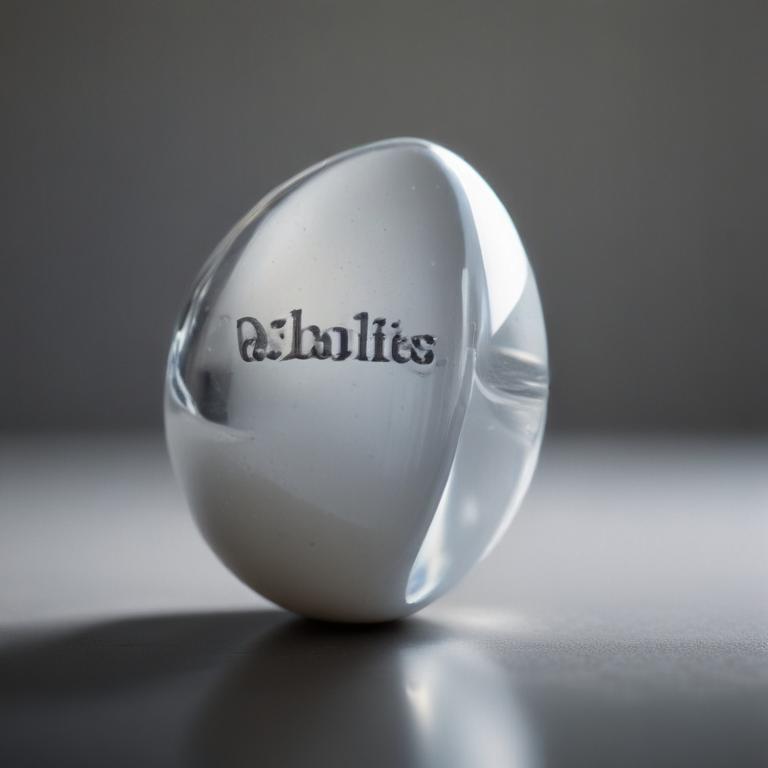发音 (Pronunciation):
IPA: /ˌdɪsəˈbɪlɪtiz/
中文近似: 迪萨比利提斯
中文意思与词性 (Meanings & Part of Speech):
- 残疾 (n.)
- 缺陷 ((待补充))
例句 (Examples):
1. Many people with disabilities face challenges in their daily lives.
(许多残疾人日常生活中面临挑战。)
2. The organization supports individuals with disabilities.
(该组织支持残疾人。)
用法提示 (Usage Tip):
注意该词通常用于描述身体或心理上的残疾,不用于形容其他类型的缺陷。
更多关于 "disabilities" (More about "disabilities")
单词来源 (Etymology)
该词来源于拉丁语 'dis-'(表示否定)和 'habilis'(表示能力),意为“没有能力”。
词根词缀解析 (Root & Affix Analysis)
前缀 'dis-' 表示否定,词根 'habil' 意为能力,后缀 '-ity' 表示状态,因此 'disabilities' 表示“没有能力的状态”。
“disabilities”的字母与词根个性化解读
字母象形/引申义 (个性化参考)
- 字母 'd' 的象形或引申含义可能包括: 门 (象形); 向下 (门引申); 牙 (嘴的门); 音变: D=T=S=TH。
- 字母 'i' 的象形或引申含义可能包括: 我 (an, any, one -> 人); 水滴 -> 水 (ice); 尖, 一点, 小 (inch); 元音互换: A=E=I=O=U=W=Y。
- 字母 's' 的象形或引申含义可能包括: 水波纹/走路痕迹 (S象形); 吐气轻细咝 -> 说话 (拟声); 音变: S=C=Z=TH=X。
- 字母 'a' 的象形或引申含义可能包括: 牛角 (象形: 牛头, 力量, 能力); 下面宽上面尖 (形状) -> 延伸, 远处, 高处, 方向, 指示。
- 字母 'b' 的象形或引申含义可能包括: 拟声 (爆破声, bang -> 爆); 两间屋子 (腓尼基象形) -> 分开, 房屋相关 (bed, build); 棒子; 鼓起来, 圆; 生命/分开; 音变: B=P=M=F=V。
- 字母 'l' 的象形或引申含义可能包括: 拉长, 长 (line); 舌头 -> 说 (language); 细, 少; 音变: L=M=N=R。
- 字母 't' 的象形或引申含义可能包括: 顶端 -> 记号/标志; 手杖 -> 抓 -> 手 -> 伸展 -> 指示代词; 支撑 -> 站立; 三叉 -> Tr转换/转; 分叉; 音变: T=D=S=TH。
- 字母 'e' 的象形或引申含义可能包括: 眼睛 (窗户符号引申); 向外 (ex-变体); 元音互换: A=E=I=O=U=W=Y。
词根/组合解读 (个性化参考)
- 单词中的片段 'it' (源自词根/组合 'it') — 含义: 走; (来源提示: exit=ex+it).
学习提示:以上针对单词 disabilities 的字母和词根解读,主要基于提供的特定象形及词根资料。这些提示旨在启发联想,而非绝对定论。更通用的记忆规则和原则请参考首页。英语词源复杂多变,实际应用中请结合更全面的词源词典和语言学知识进行深入学习。
常用词组 (Common Phrases)
- disabilities rights: 残疾人权利
- disabilities awareness: 残疾意识
其他语言 (Other Languages)
- 德语: Behinderungen
- 法语: handicaps
字母整体创意联想
单词 'disabilities' 看起来像一个人在努力克服障碍,字母 'd' 和 'b' 代表着障碍物,而其他字母则代表着努力向前。
逐字母创意解读
中文谐音助记
“disabilities” -> “低能力”
相关电影/名言
"The only disability in life is a bad attitude."
(生活中唯一的残疾是糟糕的态度。)
- 信息待补充
趣味知识/故事
在不同文化中,残疾人常常被赋予特殊的社会角色和地位,很多地方的传统习俗对待残疾人的方式各不相同,反映了社会对残疾的认知与接纳程度。
拓展信息
残疾的概念不仅限于身体上的缺陷,还包括心理、情感和智力方面的障碍。
现代社会越来越重视残疾人的权益与融入,许多国家已制定相关法律保障残疾人的平等权利。
残疾人也在艺术、体育等领域展现出色的才能,提升了社会对残疾的认识与接纳。
网络参考 (More about "disabilities" from the Web)
Disability and Health Overview | Disability and Health | CDC
What is impairment? Impairment is an absence of or significant difference in a person's body structure or function or mental functioning. 2 For example, problems in the structure of the brain can result in difficulty with mental functions, or problems with the structure of the eyes or ears can result in difficulty with the functions of vision or hearing.
What Are the 14 Types of Disability?
Learn about the 14 types of disability, including physical, sensory, communication, cognitive, developmental, and mental health disabilities. Find out how to recognize, accommodate, and support individuals with different disabilities in various settings and situations.
Disability - Wikipedia
Disability is the experience of any condition that makes it more difficult for a person to do certain activities or have equitable access within a given society. [1] Disabilities may be cognitive, developmental, intellectual, mental, physical, sensory, or a combination of multiple factors.Disabilities can be present from birth or can be acquired during a person's lifetime.
更多图片 (disabilities More Images)

